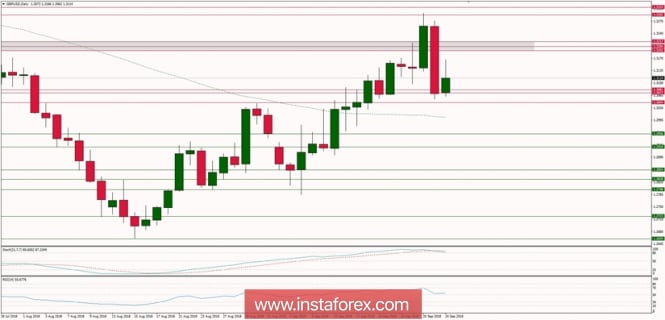This week's main focus will be on the Fed's decision, where the interest rate hike seems to be decided, but the future tightening path may be a source of surprise. The aggressive attitude of the central bank should revive the dollar's appreciation. In New Zealand, the meeting of the RBNZ should bring a neutral message. In Europe, HICP inflation readings and the Ifo index readings will be important. In addition, PMI from China and GDP from Canada may be the source of market reaction.
The decision at the end of the FOMC meeting (Tue-Wed) will be the main event of the week. The market is generally expecting a rate hike by 25 bps (to 1.75-2.00%) and 75% for the next move in December. A more lively discussion revolves around the pace of increases in 2019. The starting point is the June projection with three successive increases in 2019 and one in 2020 (together to 3.50%). Emphasizing the risk advantage for steepening the path or raising the forecast of the long-term balance (currently 2.9%) will be a hawkish signal. At a press conference, the position of President Powell will be important in the context of pressure from President Trump, the impact of the Fed's policy on emerging markets and the assessment of trade wars. We expect words of assurance about the independence of the Fed and signals that the FOMC sees external risks as not jeopardizing the adopted strategy. The Fed, which is unequaled in its hawkishness, should restore confidence in USD.
GDP reading for the second quarter is the only significant publication from Great Britain scheduled for release on Friday, although due to the fact that this is the second revision, market sensitivity should be limited. For GBP, Brexit counts the most, and the growing chances of agreeing to the conditions of a soft-Brexit make investors bolder leave short positions.
In Japan, the unemployment rate and industrial production scheduled for release on Friday will traditionally go unnoticed. It is intriguing how JPY lost its sensitivity to signals sent by the stock and debt market. Despite the Nikkei225 increases and the break-up of US bond yields on 4-month peaks, there is no sign of enthusiasm for USD / JPY increases. We think that the currency market may finally catch up.
In New Zealand, the RBNZ will almost certainly keep the main interest rate unchanged (avg). The central bank remains in the mode of observing data coming from the economy and for the time being, it is trying to leave all the options open. A strong GDP reading for the second quarter has cut the market speculation about a possible interest rate cut in the near future, but if the RBNZ maintains a prudent tone, it may strike at NZD. The calendar from Australia is empty, which for AUD means tracking the general sentiment, which for now favors, although it may end after the hawkish overtones of the FOMC. A disappointing reading of PMI from the Chinese industry (Fri) may also be a risk for risk appetite.
Let's now take a look at the GBP/USD technical picture at the H4 time frame before the GDP data are published. After the high at the level of 1.3292 the market fell towards the technical support at the level of 1.3072 and currently is trading around this level. The market conditions are overbought and the momentum is weak, so the deeper pull-back is now expected. The next target for bulls is seen at the level of 1.2956.

